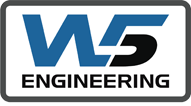ASTM D5276: meaning and use
The ASTM D5276 packaging test is mainly used for full boxes, cylindrical packaging, bags and sacks. As well as for containers under 110 lb (50 kg), whose test method meets the requirements of ISO 2206: 1987 and 2248: 1985. These ISO standards may describe procedures that do not meet the requirements for this test method
In particular, it is a drop test standard suitable for those containers that, due to their size or weight, are manually handled during the distribution cycle. There are, therefore, more suitable standards for packages with automatic handlings, such as the ASTM D880, D6055, D6179, or D4003 testing methods.
ASTM D5726: Benefits of its application
Due to the size and characteristics of the samples to be tested, many logistics, e-commerce or manufacturing companies, whose products are handled manually during some part of their distribution cycle, can benefit from the application of the ASTM D5276 standard.
Some of the advantages of complying with the standard are:
- Optimization of packaging: through the ASTM D5276 standard, the adequacy of the packaging design to the distribution cycle and the risks of impacts from falls are evaluated. In particular, it can be used to carry out comparative studies between different packaging designs, but also to progressively evaluate when the packaging and the goods inside it fail.
- Eliminate costs: the standard is aimed at achieving a packaging design that guarantees the safety of the goods. As a consequence, costs related to the decline of products during their distribution are eliminated. In addition, ASTM certification puts the company in an advantageous position when negotiating transport costs, as it provides a guarantee of the product’s ability to withstand distribution conditions.
- Improved brand image: the company demonstrates that it works to guarantee the safety of its product, designing a product+packaging system that reaches the end customer in perfect condition.
Requirements to meet ASTM D5276
The ASTM D5276 test method requires that a number of requirements are met, as the text does not provide any guidance on fall height, fall orientation or the need for repeated falls.
In particular, a document specifying the following parameters will be required:
- How many samples are to be used
- How the samples are prepared
- Height of fall
- Falling orientation
- Number of times the falls are repeated
- Specific environmental conditions, such as temperature or humidity
Therefore, this test method should be combined with other technical documents, such as some ISTA test procedures. These technical documents will dictate test parameters, such as height and orientation of the fall, or whether all tests should be performed on a single sample or multiple samples. For example, the ISTA 3A standard, created to provide a standard set of tests that test the individual performance of a package when sent through parcel services or by post.
As well as the ISTA 1A procedure, designed to challenge the strength and robustness of the product assembly plus packaging, in a controlled environment as with the ASTM D 5276 standard.
Therefore, the ASTM D5276 test method should be combined with other test methods where they are included: ISTA 1A, ISTA 2A, ASTM D4169 and TP 14850.
However, there are specific requirements in the standard for free-fall test equipment.
The basic requirements state that the fall tester must:
- Allow the container to be fixed to the apparatus in such a way that the position results in a correct orientation within 2 degrees after impact
- Allow precise control of the fall from the specified height
- Use lifting devices that do not damage the test sample.
- Provide a release mechanism that does not exert any vertical, rotational or lateral force on the test vessel.
- Provide a spring or other mechanism, only if sheets are used, that does not interfere with free fall
In addition, the impact surface of the free-fall machine must meet the following requirements:
- The impact surface must be horizontal and flat.
- It must be large enough so that it cannot move and the sample at the end of the machine falls completely onto the impact surface.
- It must be sufficiently rigid so that it does not deform due to the impact of the sample on the surface during the test.
- It must be made of concrete, stone or steel.
- The impact surface must weigh at least 50 times that of the heaviest container to be tested
- The depth and width must not be less than half the length
Equipment to perform the ASTM D5276 test
Regarding the necessary machinery, the drop tester machine from Safe Load Testing Technologies is designed to meet the ISTA, ASTM and ISO testing standards, including the ASTM D5276 protocol.
This drop tester allows the simulation of falls and rotational impacts that can affect packages and products during their handling and distribution.




